James Cameron’s Avatar hit theaters in 2009 and absolutely demolished box office records. It spawned a sequel (with more on the way), as well as books and a theme park attraction. Now, the franchise is diving into gaming for the first time in 14 years with Ubisoft’s Avatar: Frontiers of Pandora.
Avatar: Frontiers of Pandora is a first-person, open world game that takes place on a portion of Pandora not yet seen in the films. Massive Entertainment, a Ubisoft studio, developed it. Ubisoft did the Avatar movie tie-in back in 2009, so the company is working from experience. Not to mention the publisher is no stranger to the open world genre, with several Far Cry titles under their belt. And, to address the possible elephant in the room, there is Far Cry DNA all over Avatar: Frontiers of Pandora.
However, this isn’t a bad thing in and of itself. Remember, Far Cry 3 was once called “Skyrim with guns” and yet it revitalized the franchise. Similarly, even the original Avatar movie faced comparisons to Dances with Wolves, then made literally billions of dollars. Not everything has to reinvent the wheel; it’s all about execution.
So, is Avatar: Frontiers of Pandora more or less Far Cry with an Avatar paint job? Sort of. But, does it execute it well? Also sort of.
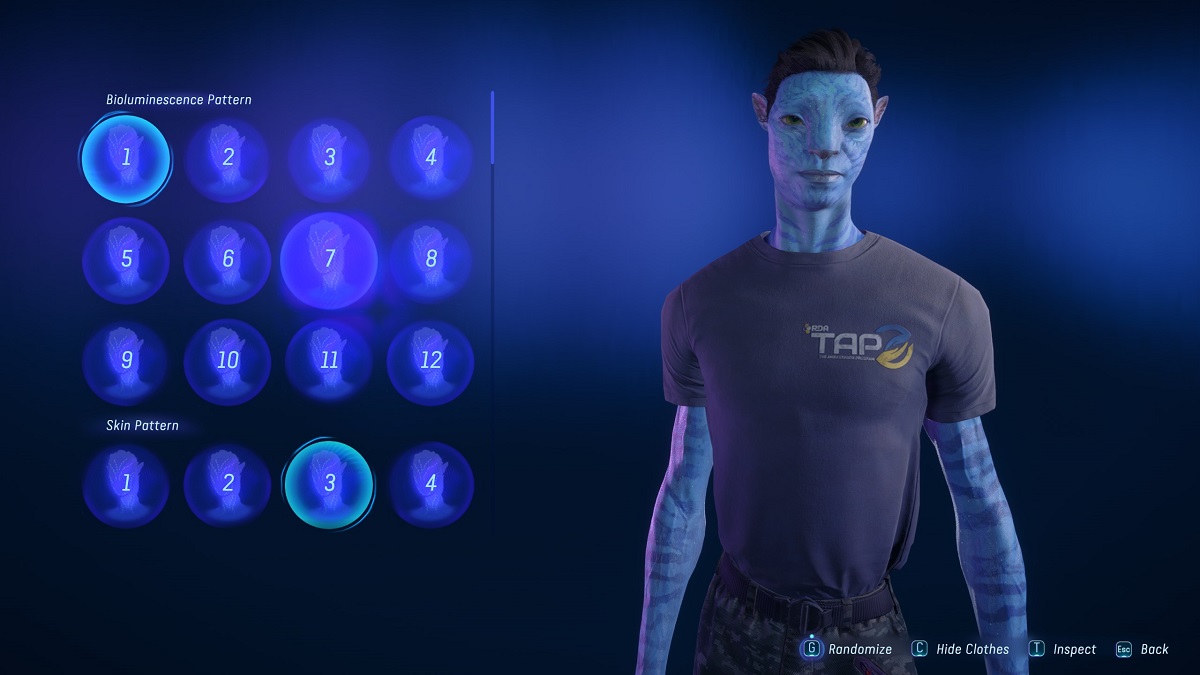
In Avatar: Frontiers of Pandora, you take control of an unnamed, customizable character, however not in the way the human characters in the film use an Avatar. In this game, you’re actually playing as a Na’vi, a choice I really liked. You customize basically everything about your character, from body type and voice down to stripe patterns your character has. You can even adjust the bioluminescence of their skin.
However, this is pretty much where choice ends. The character has a personality and interacts with the world in ways you don’t really get to influence. While you are a Na’vi, you are one that was more or less raised in captivity. This means you are learning about Pandora, but still have an emotional connection to the planet.
The plot of the game takes place sometime after the first movie, and only barely references the events of it. The main conflict of the game is between the resistance, the Na’vi tribes of Pandora, and the militant RDA. This is a pretty black and white conflict, especially from the lens of a Na’vi protagonist. I actually found this refreshing. Sometimes it’s nice to have a clear good vs. evil story.
The protagonist, one of the last of their clan, must discover their identity as a Na’vi and place on Pandora. This translates into gameplay by your character being the liaison between the mostly human resistance and the native tribes. I think they nailed this aspect. A Na’vi protagonist gives a very different perspective than what the films offer. Therefore, it allows a deeper dive into Na’vi culture than if your character was an Avatar driver.
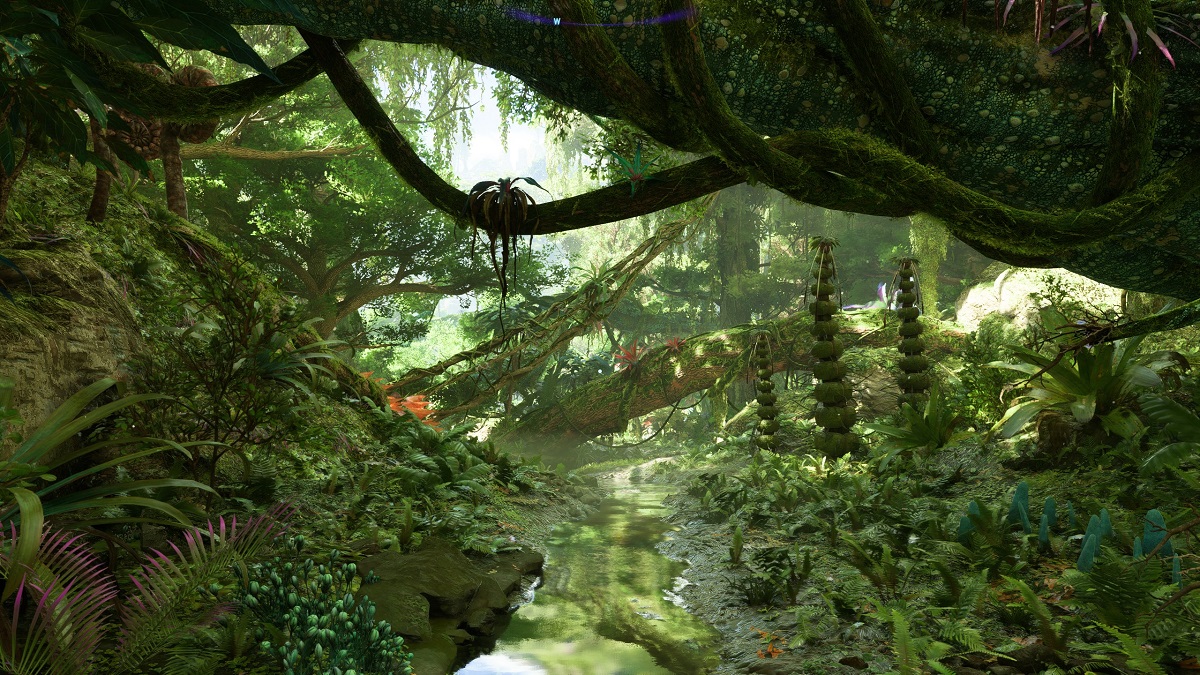
In fact, the world building in this game is probably its greatest strength. The first step into Pandora is one of those jaw dropping moments games don’t happen as often for me anymore. It reminded me of leaving the vault for the first time in Fallout 3. I found myself stopping and just enjoying the view multiple times throughout the game.
A lot of care clearly went into Avatar: Frontiers of Pandora. Massive Entertainment did the work to breathe life into the world of Pandora. The tribes act differently, depending on what you’re wearing or if you’re in favor with them. Additionally, the world simply feels alive. Flora and fauna you can’t even interact with are living, breathing, and wandering the world. If you’re a huge fan of Avatar, this game may blow your mind in the way Hogwarts Legacy did for Potterheads, in regards to the details.
The world, from a gameplay perspective, offers the usual open world fare. There are animals to hunt, resources to collect, and markers on the map to discover new items and quests. Since you’re playing as a a 9-to-10 foot tall Na’vi, you actually can navigate the world via large jumps. This adds an element of traversal not usually seen in these types of games. While this could get rather clunky at times, for the most part it was fun and made me wonder about some of the ridiculous breaks speedrunners are going to do to this game.
The real kicker when it comes to traversal though is a relatively unique mechanic not often in open world games: free flight. Not too far into the game, you gain this option and, while it doesn’t completely open up the map for story reasons, it certainly makes traversal much more fun. It’s also deeply connected to lore in ways I’ll keep vague. I hope if there’s anything future games borrow from Avatar: Frontiers of Pandora, it’s the natural and nuanced way it handles flight.
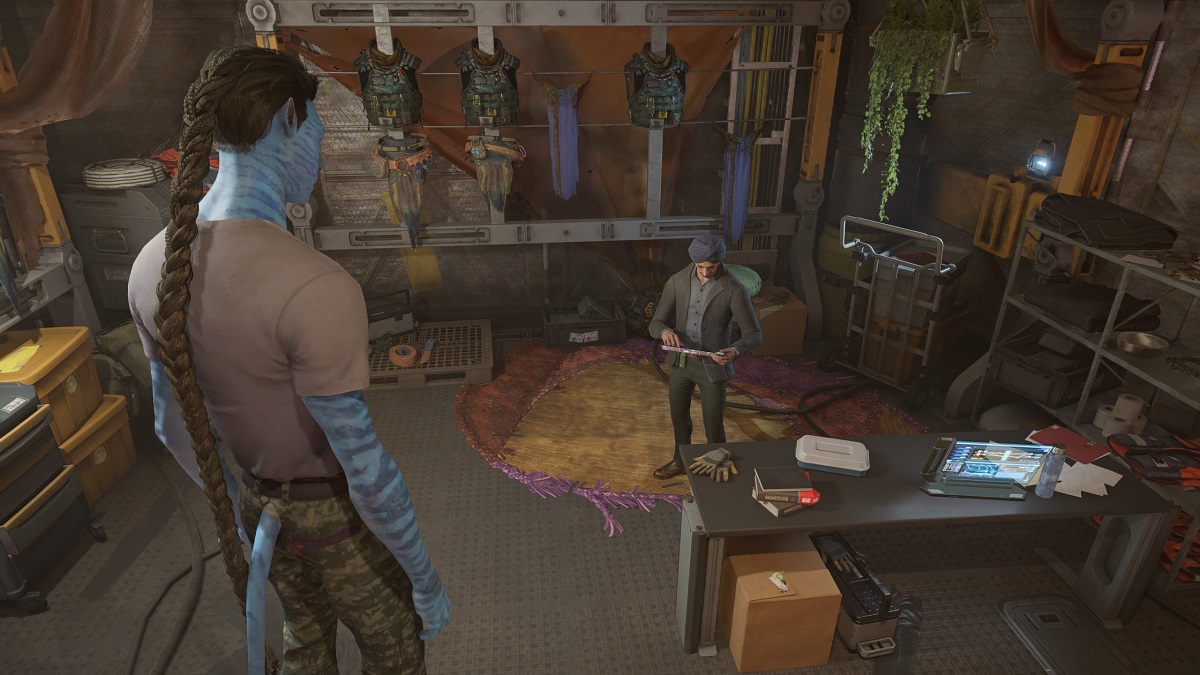
There are two navigation modes in the game: guided and exploration. Guided will give you markers on the map, as well as on your compass. Meanwhile, exploration mode just gives you hints and landmarks so you can find the objective yourself. I chose the former for most of the game, but I can see the value in using exploration mode in a game like this. When you’re not exploring all Pandora has to offer, you’re going to be dealing with quests for the resistance and native Na’vi tribes. I feel there is some attempt here to be diverse, but despite the very different setting of Avatar: Frontiers of Pandora, it falls into the same routine as other open world games.
This, to me, is the game’s biggest flaw. There is a section in the story where there are two nearly back-to-back quests where you have to use Na’vi senses to follow a trail to a missing person, fight once you get there, then follow more trails to a cutscene. You’re going to be fetching resources, you’re going to be finding missing citizens, and you’re going to be clearing out enemy outposts. Then you’re going to do it all again in a new area. Now, in most Far Cry games this isn’t a problem, but in Avatar: Frontiers of Pandora it really started to feel like an issue. One reason is because the game world is so full and vibrant that doing monotonous things in it feels especially out of place.
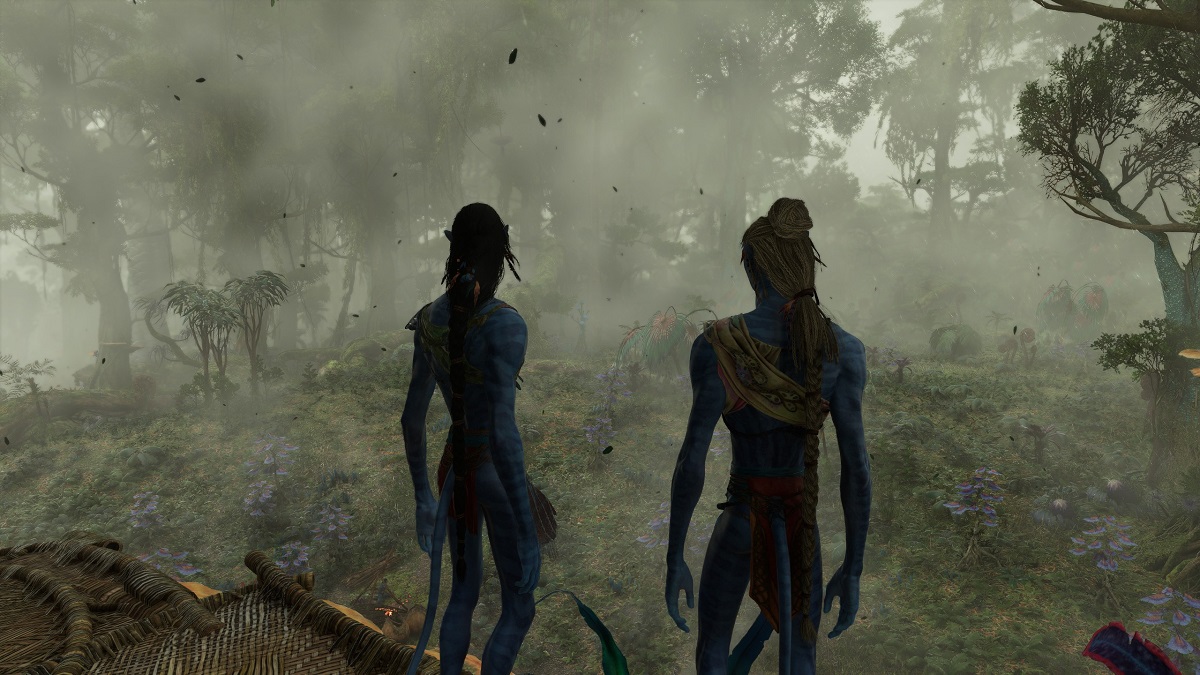
However, the woefully unbalanced combat, during the early and mid-game especially, is the real issue. Standard RDA grunts pose almost no threat to you at all and can be downed with a single arrow, while the armored ones need a whole quiver. Though these armored ones do have weak spots and more options to deal with them later, they are still way more annoying than difficult to deal with. These are also pretty much the only enemy types you’ll see for a huge majority of the game, so it gets old fighting dozens of them every time you move to something else. It made me start to put off quests, because I knew I was about to be annoyed by a combat encounter.
Take the outposts for example, like the refineries set up around Pandora. A ridiculous number of enemies usually guard these and the game makes it clear stealth is the way to deal with them. However, this game really doesn’t give you great covert options. For a large portion of the game, stealth consists of “crouch and don’t be seen.” Sure, you can sneak, but unless you do the run completely perfectly, you’re toast. I found these outposts to be, frankly, one of the least fun things I’ve done in a game in a very long time. The game has no business doing so much right and failing so miserably there. Especially when Far Cry has fun and engaging outposts in every release, even if they are occasionally monotonous too. Though I will say, harkening back to the fun of flying, that midair combat was executed quite well. I found myself enjoying taking to battle in the skies way more than on land.
However, to help with combat there is a skill tree full of upgrades and new abilities, though I found the buffs to be the most useful. The abilities, especially combat ones, tended to be so situational that they usually weren’t worth attempting to pull off. The skill system actually sort of plays into the series’ lore, with the character learning these abilities from the their spiritual ancestors. This is yet another way the game ties lore and worldbuilding into the gameplay.
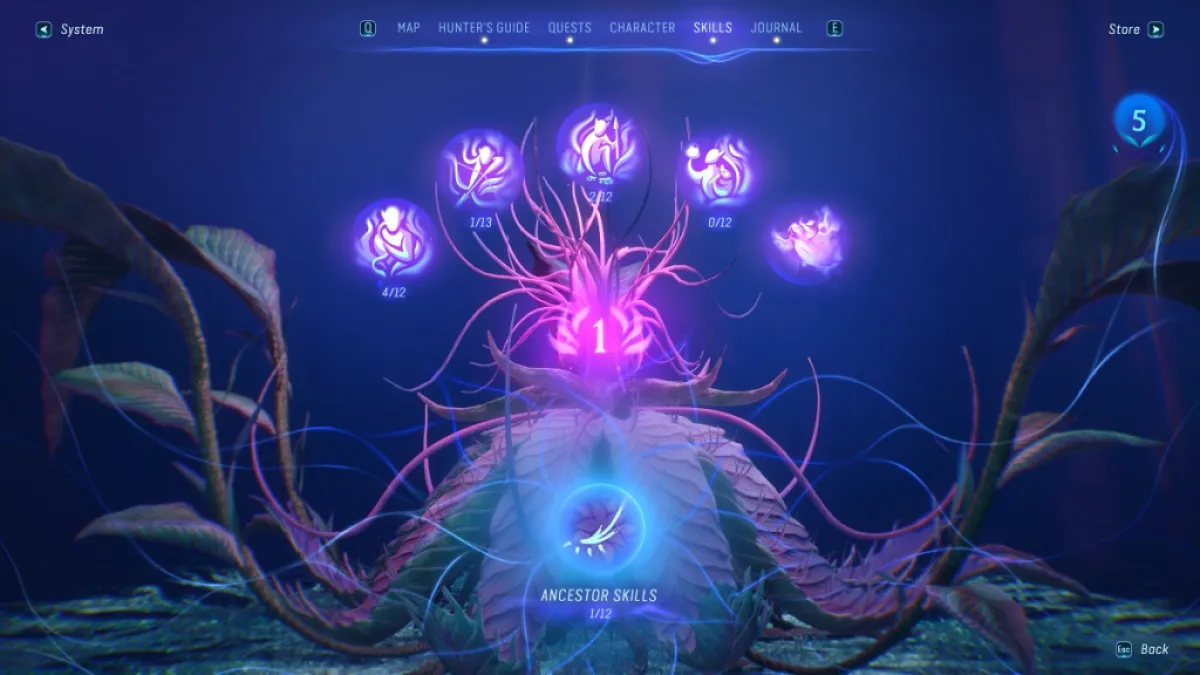
There is also a cooking and crafting mechanic to use all those resources you’ve been gathering. I loved how some of it was handled, especially as you rarely see it in games. You can create the same item using multiple types of a resource, and the item actually changes its appearance depending on what you use. For example, if you use a specific plant as the ingredient in your bow, the bow will take on the appearance of that plant. This is such a small detail that really made me happy every time it came up, and it actually made me want to go and find more resources to see how different I could make my gear look.
All in all, I feel like there is a lot to love about Avatar: Frontiers of Pandora. There truly is an amazing world to get lost in and forget about the rest of the game. However, it seems like that may be what the developers did. The team went full tilt on aesthetics and worldbuilding, and nailed it. However, the monotony of the combat and many quests takes away from the overall experience. So no, Avatar: Frontiers of Pandora isn’t a soulless Far Cry clone. There is love and care put into recreating James Cameron’s world. However, once the awe of wandering Pandora eventually wears off, you’re left with a game that doesn’t have as much going on as it should in a world this vast and alive.
Avatar: Frontiers of Pandora is available on the PC, PlayStation 5, and Xbox Series X.
Avatar: Frontiers of Pandora is an open world game based on the Avatar film series. Play as an orphaned Na'vi as they navigate hostility between the native Tribes of Pandora and the militant RDA. PC version reviewed.
Avatar: Frontiers of Pandora has so much heart and soul in it's world and lore. Unfortunately, the core gameplay subtracts from this a bit too much to ignore.
- The game truly feels like a love letter to fans of the Avatar franchise.
- One of the most vibrant and alive open worlds seen in a game.
- The quests and side content not tied to exploration start to feel like a chore way to early in a game like this.
- The combat gets stale quickly, and never really spices back up even as you gain new gear.

